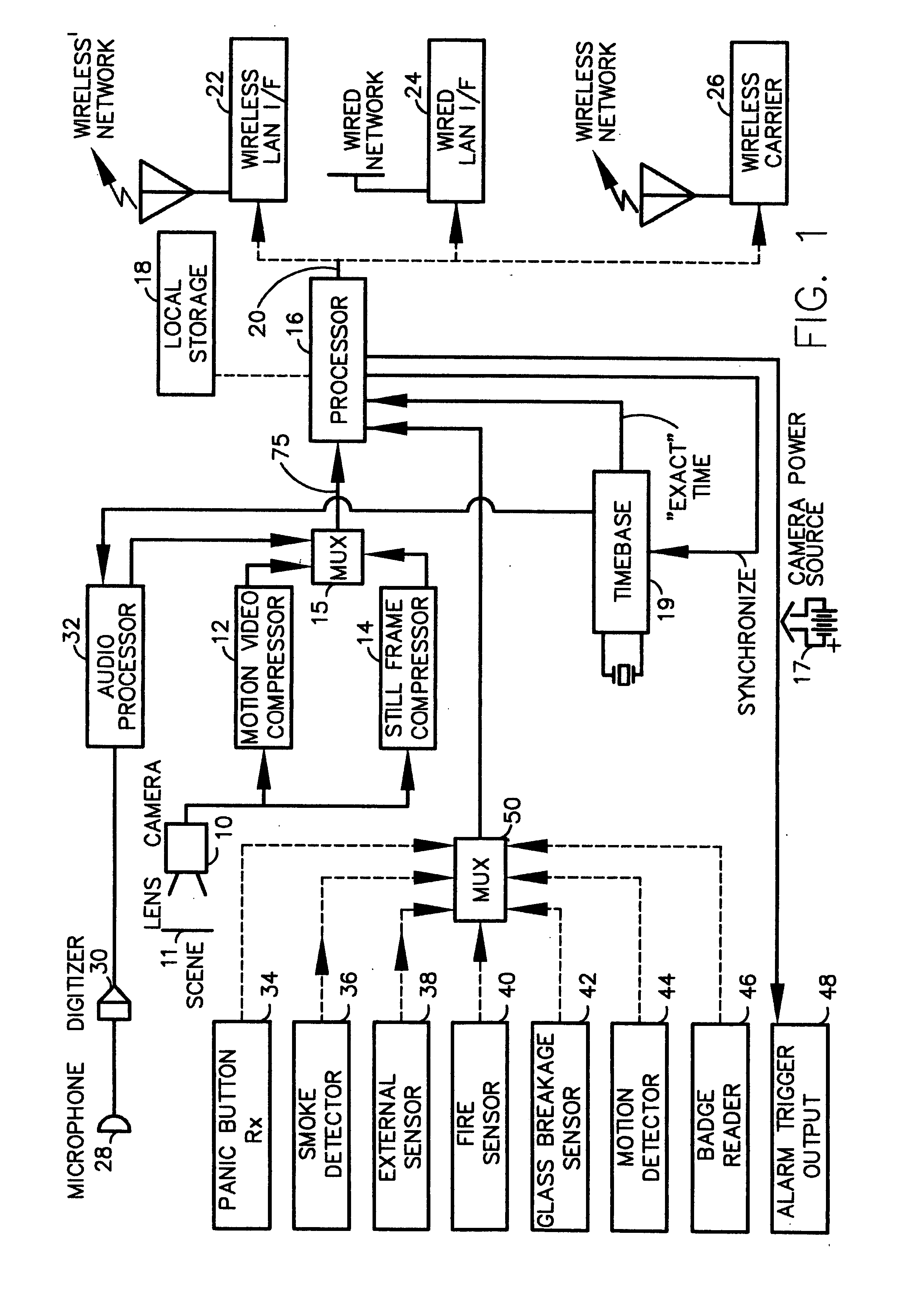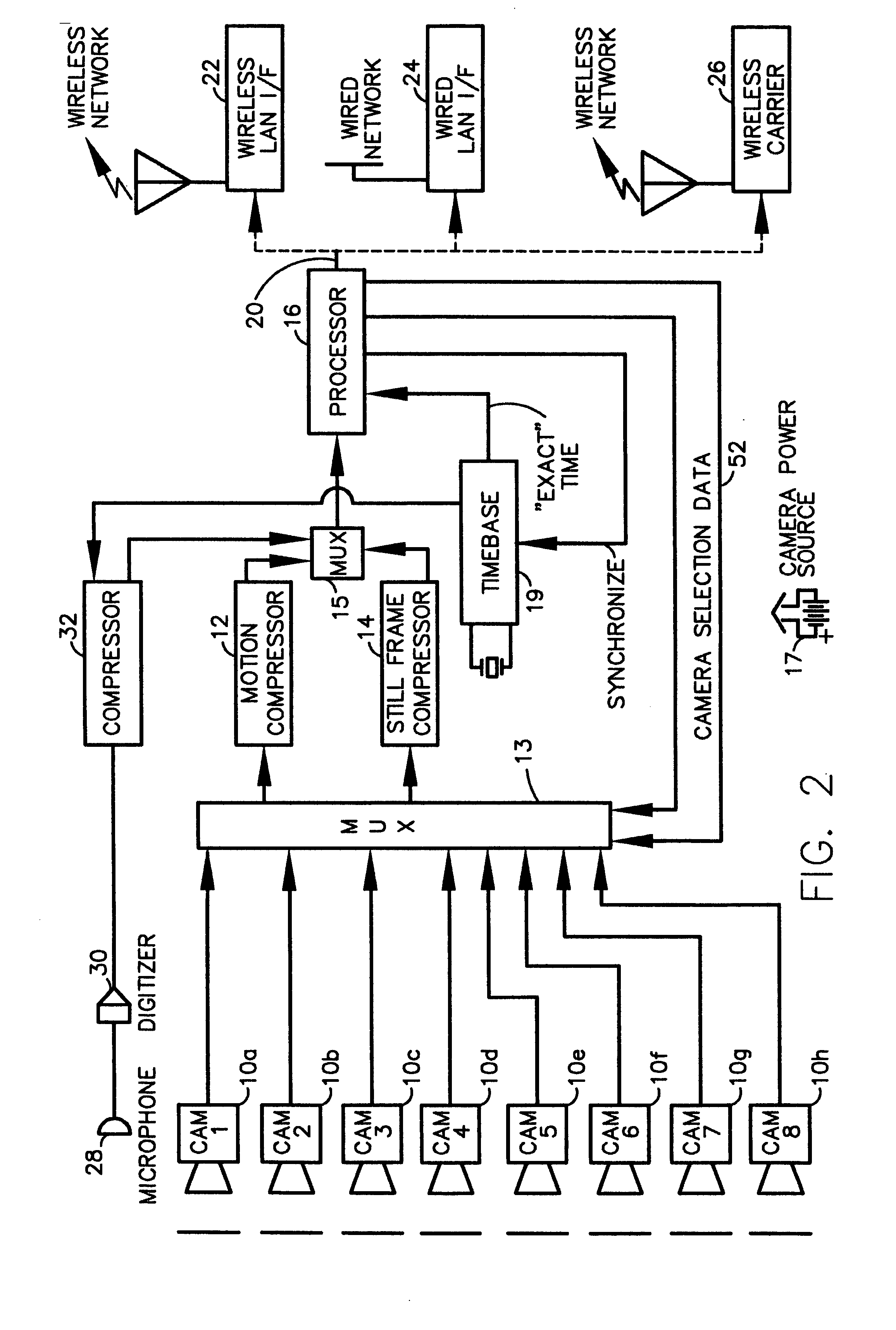Digital security multimedia sensor
a multimedia sensor and digital security technology, applied in the field of digital cameras and sensors, can solve the problems of not providing situational data other than their on/off status, affecting the quality of digital security, so as to reduce the overall network bandwidth, and improve the effect of security
- Summary
- Abstract
- Description
- Claims
- Application Information
AI Technical Summary
Benefits of technology
Problems solved by technology
Method used
Image
Examples
Embodiment Construction
[0085] With specific reference to FIG. 1, an overall system configuration for the camera includes a lens and image sensor 10 for capturing a scene 11 within the range of the sensor. The sensor generates a digital signal of the scene, which is then transmitted to a motion video compressor 12 and / or a still frame compressor 14. The compressed signal is then output to a processor 16. Where both still and motion are captured, a multiplexer 15 is provided for merging the signals in advance of the processor. Local storage 18 is provided for storing the image signal prior to transmission when the transmitting signal is not activated. This permits data to be archived, allowing both pre-event and event data to be transmitted when the camera is activated to the transmitting mode. Local storage 18 can also be used for primary storage if no network is available, or if there no network available. It may also be used to archive data at another resolution than that which is being delivered over th...
PUM
 Login to View More
Login to View More Abstract
Description
Claims
Application Information
 Login to View More
Login to View More - R&D
- Intellectual Property
- Life Sciences
- Materials
- Tech Scout
- Unparalleled Data Quality
- Higher Quality Content
- 60% Fewer Hallucinations
Browse by: Latest US Patents, China's latest patents, Technical Efficacy Thesaurus, Application Domain, Technology Topic, Popular Technical Reports.
© 2025 PatSnap. All rights reserved.Legal|Privacy policy|Modern Slavery Act Transparency Statement|Sitemap|About US| Contact US: help@patsnap.com



